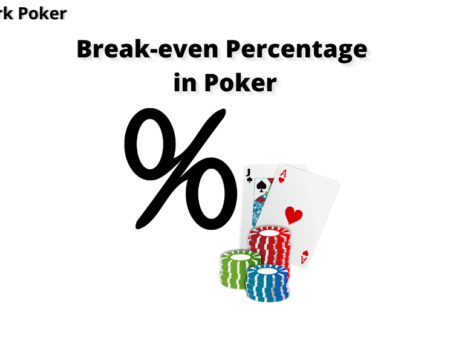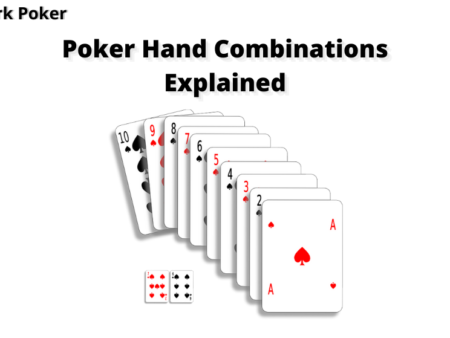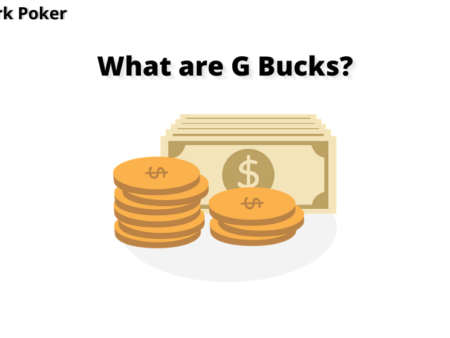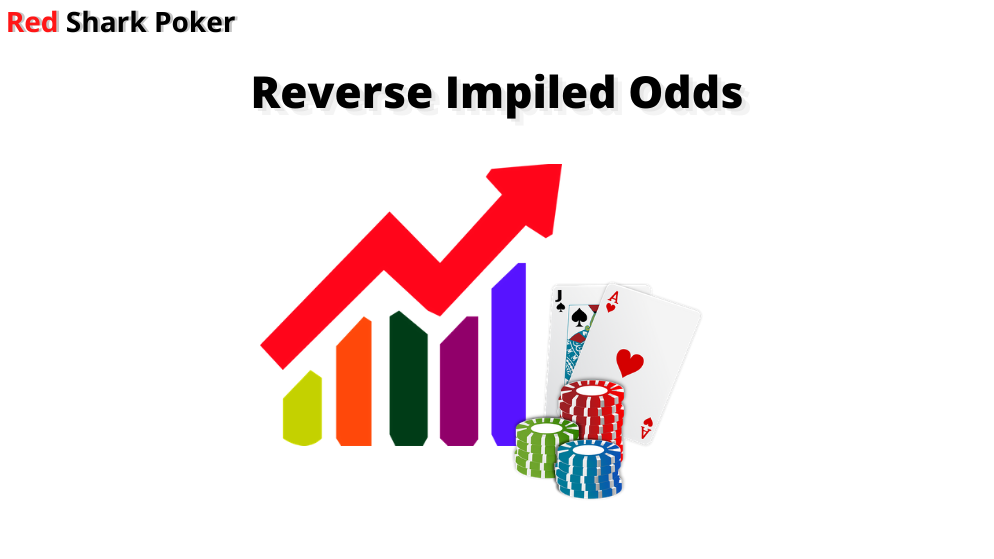
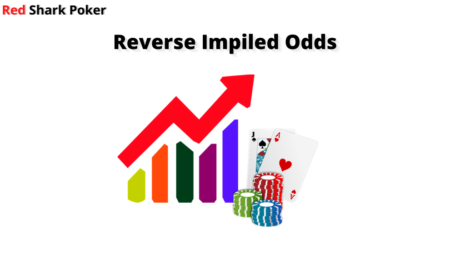
Poker, like the game of chess, is about thinking one step ahead of your opponent. You need to think of the cards that will help you win the game as well as of the cards that will help your opponent. When you have draws, you usually think how much money you can expect to win if you hit your draws. But do you think of the money you might lose if you hit your draws?
That’s where the concept of reverse implied odds in poker come into play. It is thinking ahead of how much money you might lose if you hit your draw!
What is Reverse Implied Odds in Poker?
Reverse implied odds in poker is an extension of pot odds that give you an estimate of how much you might lose even if you complete your draw. If you complete your draw on the later streets, there is a possibility that your opponent might be holding a stronger hand than yours. If you raise or call your opponent’s bet after completing your draw, you might end up losing money.
Reverse implied odds in poker are exactly the opposite of implied odds. Implied odds tell you how much you can expect to win after completing your draws. However, reverse implied odds give you an estimate of how much you are likely to lose on the later streets even if you complete your draw. If you have an understanding of this concept, it will help you to think one step ahead. You will get a better picture of what might happen on the later streets and be more cautious even after completing your draw.
If you don’t know what implied odds are, we suggest you to read this chapter: What are Implied Odds in Poker?
Common Examples of Reverse Implied Odds in Poker
Let’s look at the common examples of reverse implied odds in poker and learn how to avoid losing money even if you hit your draws.
Straight Draw Vs Flush Draw
This is the most common example where you might lose a lot of money on completing your straight against your opponent’s flush. Let’s look at the example below:
A tight-aggressive player from Under the Gun raises to 3X big blind, and you call with 9♥ 10♠ from the cut-off. Everyone else folds. The flop read: 2♣ J♥ Q♣.
Your Hand: 9♥ 10♠
Flop: 2♣ J♥ Q♣
You have an open-ended straight draw here. If an 8 or a King hits the board, you complete your draw. However, if it is an 8♣ or a K♣ hits the board, your opponent might complete his flush draw. If your opponent bets when an 8♣ or a K♣ hits the board, there is a strong possibility that your opponent is betting on his completed flush draw. If you call, you will end up losing money as his flush will beat your straight!
Low-end Straight Draws
This is another common example where many players lose a lot of money. If you have a low-end straight draw, there is a possibility that your opponent might be holding a better straight draw. Let’s look at the example below:
A tight-aggressive player makes a preflop raise of 3X big blind from Under the Gun, and you call with 7♥ 8♠ from the button. Everyone else folds. The flop reads 9♥ 10♣ 2♦.
Your Hand: 7♥ 8♠
Flop: 9♥ 10♣ 2♦
You have an open-ended straight here. If a 6 hits the board, you complete your straight of 6, 7, 8, 9, 10. However, if a Jack hits the board, there is a possibility that your opponent is holding a KQ, which will complete this nut straight of 9, 10, J, K, Q. When a tight-aggressive player raises preflop, a KQ is well within his range. His range can include pocket pairs like AA, KK, QQ, JJ, TT and even broadways like KQ, AQ, AJ and KJ. So, if a Jack hits the board and your opponent bets or raises, you must think of the reverse implied odds in poker before you call. If you call and your opponent is holding a KQ, he has the nut straight.
Weak Flush Draws
Weak flush draws can turn out to be very costly in many situations. If you have a weak flush draw, there is a possibility that your opponent might be holding the nut flush. Let’s look at the example below:
You open-raise to 2.5X big blind with 5♥ 6♥ from Middle Position, and a loose-aggressive player calls from the Big Blind. The flop reads 2♥ 10♥ J♥.
Your Hand: 5♥ 6♥
Flop: 2♥ 10♥ J♥
It’s a great flop as you have hit a flush. However, there is a possibility that your opponent might also be holding two hearts. And if the turn or river hits another heart-suited card, there is a possibility that your opponent has a stronger heart-suited card. So, you need to think ahead and evaluate how much you might lose if your opponent has the nut flush.
Paired Boards
If you hit a pair on a paired board, be very cautious as your opponent might be holding Trips, a Full House, or Quads. Your pair, which has become two pairs, will have no chance against such strong hands. Evaluate the situation carefully before calling any raise. For example,
Your Hand: K♥ J♠
Board: 9♥ 9♣ K♦ 2♠ 8♣
Although you have two pairs, be very cautious on a paired board. Your opponent can slowplay with a Trips or Quads of Nines or a Full House.
Reverse implied odds is closely related to the concept of poker counterfeiting. Click to Read: Counterfeiting in Poker Explained
Is There a Way to Calculate Reverse Implied Odds in Poker?
The answer is no. Sadly, there is no way to calculate reverse implied odds in poker. Reverse implied odds are not possible to calculate mathematically, and you cannot find out the exact amount on how much you are expected to lose. As you have seen in the examples above, you need to think ahead of the possibilities where your opponent’s hand can be stronger than your completed draws.
Conclusion
Familiarization of reverse implied odds in poker makes you a conscious player where you are aware of the possible situations that can beat your completed draws. When you are thinking ahead, you won’t be over-excited on hitting your draws. You will be analytical and fold your weak draws, which will save you a lot of money, and most importantly, make you a better poker player!

